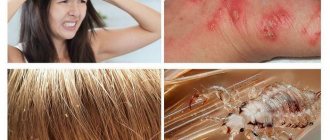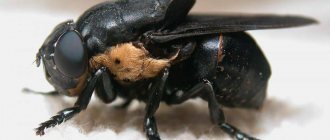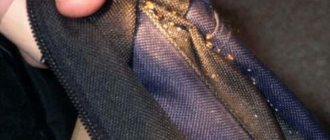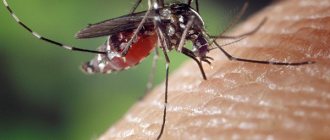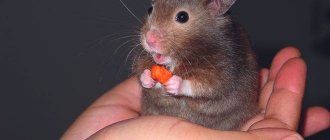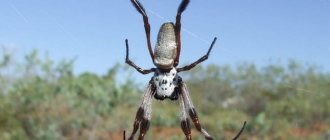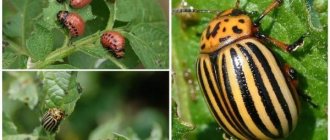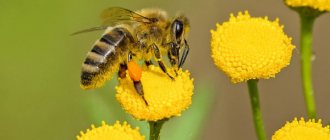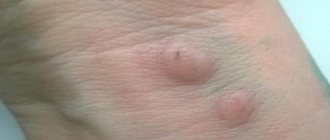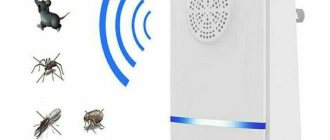Blood-sucking dipterous insects. Characteristics and control measures
Gnus is the general name for blood-sucking insects: horse flies, mosquitoes, midges, biting midges and mosquitoes. About 800 species of midges are common in Russia.
The gnus has a dual nature of nutrition. To maintain the life of the imago, plant juices are sufficient, which are the only food for males and the main food for females. For the maturation of eggs in the ovaries, females need blood as protein food (gonotrophic harmony). Therefore, only females attack animals and people, who suck blood immediately after fertilization, and then after each oviposition. The midges are characterized by heterotropism - the existence of different phases in biotopes of different types: eggs, larvae and pupae live in water or a moist substrate, and adults live in the air.
Horseflies
Horseflies (family Tabanidae) are the largest blood-sucking insects, numerous in the taiga, forest and forest-steppe zones. More than 180 species of horseflies have been registered in Russia, belonging to 12 genera: Pangonius, Nanorhynchus, Heptatoma, Tabanus, Hybomitra, Atylotus, Phillipomya, Dasyrhamphis, Therioplectus, Chrysops, Haematopota, Silvius. The genera that are richest in species are Tabanus, Atylotus, Hybomitra (horseflies themselves), Haematopota (rain flies), Chrysops (pied flies, or lacewings).
Morphology. Body length 6-30 mm. Color depending on the species: yellow, brown, black. The head is large, wider than the chest, with large compound eyes on the sides. On the crown of some species there are 3 simple ocelli. The antennae are short, 3-segmented. The proboscis is of a piercing-sucking type. The chest is massive, wide, with a large triangular shield, densely covered with thin hairs, the wings are wide. Legs with three suckers. The abdomen is wide, flattened in the dorsoventral direction.
Developmental biology. The optimal temperature for horsefly flight is 19-30 °C. In mid-latitudes, adult horseflies appear at the end of May and remain until the end of August. As they move north, the flight of horseflies shifts to later dates. The total flight duration in the middle zone is 90 days, in the north - 30, in the south - up to 120 days. Mating occurs in the air, after which the female attacks the animals and sucks blood. 3-4 days after bloodsucking, the eggs mature and the females begin to lay them on plants near water, up to 1 thousand pieces. Females usually lay eggs 5-6 times throughout their life (from 1 to 2 months). After 4-9 days, the eggs hatch into larvae, which, falling into water or moist soil, lead a predatory lifestyle, molt several times, grow, reaching 2-5 cm in length by the end of summer. The larvae overwinter in the soil at a depth of 5-10 cm. In the spring they crawl to drier places, pupate in the soil, and after 1-3 weeks adult insects emerge from the pupae. The entire development cycle of horse flies takes 1-3 years.
Veterinary significance . Thanks to their keen vision and sense of smell, horseflies quickly find animals. Their injections are very painful, and the female makes up to 20 blood sucking attempts in a short time. In the middle zone, on a summer day at a temperature of 19-20 °C at noon, up to 300 individuals can attack one animal in 10 minutes. horseflies. In the north, with 24-hour lighting, horseflies attack deer en masse within 20-24 hours. Animals lose fat, and cows' milk yield decreases by 15-20%. Horseflies are carriers of anthrax, tularemia, deer necrobacteriosis, INAN virus, trypanosomiasis, anaplasmosis and some filariae.
Mosquitoes
Mosquitoes belong to the family Culicidae. It includes 2.5 thousand species and 3 subfamilies, of which Anophelinae and Culicinae cause the greatest damage to livestock. In Russia there are 82 species of mosquitoes, about half belong to the genus Aedes, 20 to the genus Culex, 8 to the genus Culiseta, 9 to the genus Anopheles.
Less representative are the genera Mansonia, Uranotaenia, and Orthopodomyia.
Morphology . Mosquitoes are insects with a thin body, 4-11 mm long. Body color is yellow, gray or brown. The eyes are compound. The antennas consist of 15 segments. The mouthparts are piercing-sucking type. The chest is wider than the abdomen. The legs are long, the paws end in a pair of claws. The abdomen is elongated, consists of 10 segments
Developmental biology. On quiet evenings, males swarm in the air in swarms, emitting a buzzing sound. The females fly into the swarm and carry the males with them. Copulation occurs on the fly, after which the females develop a need for blood sucking. Having sucked blood, after some time they lay eggs (120-400 eggs at a time) on water in stagnant bodies of water or in moist soil. After 2-8 days, a larva forms in the egg, which molts 4 times and turns into a pupa, from which an adult then emerges.
The larvae feed on organic debris and breathe atmospheric air supplied by non-malarial mosquitoes through a stigma located at the end of the respiratory tube (siphon). At the same time, at the surface of the water they are in a vertical position upside down. In malaria mosquitoes, the stigma is located on the dorsal surface of the 8th segment, so they are located horizontally at the surface. Mosquitoes live 1-2 months. During this period, the female undergoes one or several gonotrophic cycles. Mosquitoes are crepuscular bloodsuckers; their activity lasts 4-5 hours.
Veterinary significance. In the forest zone of central Russia in June, in 5 minutes there are up to 1.5 thousand mosquitoes on one horse, up to 600 on a cow, up to 200 on a calf. During the intense summer of mosquitoes, the milk yield of cows decreases by 20-30%, and increase in live weight in young animals - by 20-40%.
By sucking blood, mosquitoes lead to anemia and exhaustion in animals. The skin in areas of massive bites swells and dermatitis develops. Mosquitoes are carriers of pathogens of tularemia, encephalitis, many arbovirus infections, malaria and some filariae.
Midges
The family Simuliidae includes more than 900 species. 322 species and 43 varieties of midges have been registered in Russia. Often, among dozens of species common in any area, only 1-3 species are blood-sucking. Midges are one of the most important components of midges in forest and taiga areas, especially near large rivers.
Morphology. Midges are small (2-6 mm) insects of gray, black or dark blue color. Their head is bent to the lower surface of the chest. The proboscis is of a piercing-sucking type. The eyes are faceted, the antennae consist of 11 segments. The chest is humpbacked and slightly hairy. The wings are wide, oval, transparent, without cross veins. The legs are short, the tarsus ends in a pair of claws. The abdomen is sac-like and can stretch greatly when eating.
Developmental Biology . The exit areas for midges are fast-flowing rivers, streams, drainage canals. They lay their eggs on stones, leaves and branches of plants wetted with water, or drop them into the water during flight. After 4-5 days, a worm-shaped larva emerges from the egg and attaches itself to various objects in the water using the adhesive secretion of the arachnoid glands. The larvae, having gone through 3 stages of development, turn into a pupa in 15-20 days. The adult insect emerges from the pupae in water. Surrounded by an air bubble, the midge rises to the surface of the watercourse and takes off. The development time of midges can vary from several days at high air temperatures to several weeks at low temperatures. Shortly after emergence, during swarming, females mate with males.
Midges feed on plant nectar, but the females of many species feed on blood. They attack animals mainly in the morning and evening. Midges produce 1-3 generations per year and overwinter in the egg and larval phase.
Veterinary significance. Midges are massive bloodsuckers. At one time, the female is able to drink 1-3 mg of blood. Midge bites are very painful; saliva contains hemolytic poison, causing intoxication of the body (simuliotoxicosis) . Mechanically they transmit the causative agents of tularemia, anthrax, encephalitis, and biologically - the causative agents of onchocerciasis in cattle and trypanosomiasis in birds.
Mokretsy
Distributed in almost all zones of Russia. Midlings (family Ceratopogonidae) are most numerous in Siberia and the Far East. Representatives of the genera Culicoides, Leptoconops, and Lasiohelea are more common.
Morphology. Externally, biting midges are similar to mosquitoes, but are smaller in size (1-2.5 mm). The head is rounded, tilted down, and bears a pair of 15-segmented antennae. The compound eyes are large and bean-shaped. The proboscis is massive, piercing-sucking type. The chest is convex. The wings are wide, hairy, folded over the abdomen at rest; in midling midges of the genus Culicoides they have spots. The legs are long, without pulvillas, with claws on the paws. The abdomen is ovoid, of 10 segments.
Developmental biology. Breeding sites for midges are shallow areas of rivers, lakes, swamps, tree hollows, and damp forest litter. After 3-6 days, larvae emerge from the eggs, and after 2-3 weeks they turn into pupae. The pupal phase lasts 3-7 days. Up to 5 generations of biting midges can develop during the year. They overwinter in the egg and larval stages.
Veterinary significance. Midges are massive bloodsuckers of animals and humans. Their bites cause anxiety in animals, itching, inflammation of the skin, and swelling of the subcutaneous tissue. Saliva
causes symptoms of general toxicosis. Midges are intermediate hosts of equine onchocerciasis pathogens, as well as mechanical carriers of a number of infectious agents.
Mosquitoes
Mosquitoes belong to the family Psychodidae, subfamily Phlebotonidae. There are about 300 species of mosquitoes in the world fauna.
Morphology . The body is 1.5-3 mm long, abundantly covered with yellow-brown hairs. The head is small, with a pair of compound eyes, in front of which there are long antennae consisting of 16 segments. The mouthparts are piercing-sucking type. The chest is humpbacked on top. The wings are wide, hairy, and at rest raised at an angle of 40°. The legs are long, thin paws end in a pair of claws. The abdomen is elongated and consists of 7 segments.
Developmental Biology . After bloodsucking, females lay eggs in rodent burrows or in damp organic waste. At 26 °C, the egg develops in 7 days, the larvae in 28-35 days, and the pupae in 12 days. Mosquitoes overwinter in the 4th instar larval phase. Adults appear in April–May and disappear in September–October. Mosquitoes produce 1-3 generations per season. These are crepuscular insects. At the sites of insect bites, animals develop itchy skin and develop dermatitis. Horses, dogs, birds and humans are the most susceptible to their bites. Mosquitoes are biological carriers of leishmaniasis pathogens in animals and humans.
Measures to combat midges
When organizing the fight against blood-sucking insects in animal husbandry, general economic measures are envisaged, measures to limit and eliminate their breeding sites, extermination of larvae and winged insects, as well as special measures aimed at group and individual protection of different types of animals from midges.
General economic measures include the location of livestock farms, summer camps, and pens used for animal recreation, away from swamps, swampy forests and shrubs on elevated, dry, well-wind-blown areas. For grazing animals, it is necessary to use the time of least insect activity. When the number of horseflies is high, animals are grazed at night, morning and evening hours. If mosquitoes, biting midges and midges dominate, animals are grazed day and night. During periods of high midge activity, animals are kept indoors or under specially equipped shady canopies. In open pens and in parking lots during rest, smoke fires are used to protect animals.
Limitation of places you are the fruit of a. Wetlands are being reclaimed, pastures are being developed, and hydraulic structures are being built that change and regulate the regime of flowing water bodies.
Hydraulic engineering measures (construction of dams, reservoirs) prevent, as a rule, the development and breeding of midges in flowing water bodies. However, in this case, it is necessary to provide such a water level in reservoirs so as not to create shallow and wetlands that are favorable for the breeding of other families of blood-sucking insects.
In conditions of irrigated agriculture, as well as during land reclamation, the canal system and other irrigation structures must be maintained in good condition and the discharge of water into areas not used for crops must be prevented.
The most radical means of preventing the breeding of mosquitoes is the plowing of desert and semi-desert virgin lands, replete with rodent burrows, which is carried out taking into account agricultural expediency.
To exterminate mosquito larvae, ground and aerial treatments of water bodies with insecticides are used. Activities related to the treatment of reservoirs are coordinated with the SES. The population is informed about processing times and precautions through the press and television.
Of the large number of drugs recommended for the control of mosquito larvae, the most widely used are abate (diphos), bytex, DDVP, dibrom, dursban, karbofos, metathion, trichlorometaphos-3, which are used according to the current instructions. The biological product bactoculicide is effective, as well as analogues of juvenile hormones (altoside, dimilin, etc.). It must be remembered that the costs are recouped only if there are biotopes of no more than 15-20% of the total pasture area.
The effectiveness of the measures is assessed as follows. If 24 hours after treatment 100% mortality of larvae has not been achieved, it is necessary to re-examine after 48-12 hours. In the future, to determine the duration of the effect, water bodies are examined once every 5-7 days until the population is restored. The presence of larvae of the 2nd - 4th stages of mosquitoes after 24-72 hours when examining treated reservoirs indicates poor-quality treatment.
To combat midge larvae, sluicing of rivers, drainage canals and other flowing bodies of water is of great importance. At the same time, the water level rises, its turbidity increases and oxygen saturation decreases, which leads to mass death of midge larvae and pupae. Liberation from larvae and pupae is also facilitated by the subsequent discharge of accumulated water.
The preimaginal stages of other components of the midges are not fought due to their biological characteristics.
For the massive systematic extermination of horseflies on cultivated pastures in the forest zone, various types of attractive traps with insecticides are used, in quantities of 15-25 pieces. Depending on the terrain conditions and size, pastures are placed along wind-protected edges and forest clearings where a high number of insects is observed. The most effective and convenient for this purpose are spherical traps with an attractive black leatherette ball with a diameter of 60 cm and a transparent cone-shaped catching canopy made of polyethylene film, at the top of which a porous material impregnated with an insecticide is placed. As insecticides, 2-2.5% emulsions of propoxur or its mixtures with metathione in a 1:1 ratio are used. The material is impregnated every 3-4 weeks. One trap with a high number of insects can destroy more than 10 thousand female horseflies during the day.
The immediate destruction of mosquitoes, midges and biting midges in limited areas is achieved by smoke from various types of insecticide bombs. For short-term protection of animals on vacation, they are smoked directly in the pen together with the surrounding area with a radius of 50-100 m downwind or sprayed on the windward side with a 0.2% emulsion of DDVF or dibrom at the rate of 150-200 l (300-400 g DV ) per 1-1.5 ha or 1% diphos emulsion - 200 l/ha. Fine-droplet spraying is carried out from hydraulic consoles or disinfection machines with sprayers and hoses attached to long poles.
In order to prevent the entry of insects and longer-term protection of animals in parking lots, the surrounding area within a radius of 50 m or more is sprayed with 0.2% emulsions of propoxur, 0.5-1% emulsions of abata, karbofos, metathion and bytex at the rate of 30- 50 ml/m2 surface.
To protect against the midges of cattle, the skin and hair of animals is systematically treated with repellents - oxamate and TGN or insecticides - DDVF, dibrom, permethrin, K-otrin and butox. Oxamate is used in the form of a 3% aqueous emulsion by large-droplet spraying at the rate of 0.5-1.0 liters per calf and 1.5-2 liters per adult animal; using the method of low-volume fine-drop spraying or aerosol treatment with a 20% emulsion at the rate of 50 ml per calf and 100 ml per adult animal. TGN is used in the form of a 10% solution in a dose of 1-2 liters per head.
Large droplet spraying is carried out using DUK, LSD, VDM, ShGR and other mechanisms when animals pass through the split. For low-volume spraying, the Olen sprayer, VDM, aerosol nozzles PVAN, TAN, SAG, DAG, etc. are used. Insecticides DDVF and dibrom are used for spraying in the form of 0.5% aqueous emulsions, permethrin - 0.1% emulsion K -otrin and butox - 0.0025% emulsions with consumption rates of 500-700 ml per animal. Aerosols obtained from 1-2% oil solutions or DDVF emulsions are also used, with consumption rates of 25-50 ml per head.
During intensive flight of mosquitoes, animals are treated with insecticides and repellents in the evening after milking, and during the period of mass flight of horseflies - in the morning. Pyrethroid ear tags are also effective.
To protect horses from midges in hot sunny weather during the period of mass flight of horseflies, they are kept under shady canopies in the stables. Working horses are sprayed with a 20% emulsion or treated with oxamate aerosols at a rate of 50-100 ml per animal. The neck, dewlap, lower abdomen and inner thighs are treated especially carefully. Special tape blankets soaked in a 10% oxamate emulsion are also used, which are put on a harnessed horse. Smoke fires are used on pastures in the morning and evening. To instantly reduce the high number of insects near the herd, insecticidal smoke from bombs with pyrethroids is released.
To protect reindeer from midges, oxamate in the form of a 3% aqueous emulsion at a rate of 150-200 ml per animal is effective. During the period of mass flight of horse flies and gadflies, deer are treated with insecticides: 0.25% emulsions of DDVP or dibrom, as well as pyrethroids: permethrin, K-otrin and butox. The treatment is carried out on a tandem of "Sever" and "Olen" sprayers, equipped with two hoses, 20 m long each, with wormless fine-droplet sprayers. The sprayer is installed a few meters from the herd, the ends of the hoses with sprayers are tied to poles (trokes) and, holding them at a certain height, the finely sprayed emulsion is directed at the deer downwind. During the period of mass flight of insects, 2-3 sprayings are carried out per day.
Transport deer are sprayed with 20% oxamate emulsions at a rate of 50-100 ml per deer or treated with aerosol cans.
Insects may develop resistance to insecticides, that is, the insensitivity of insects to poisons of obviously lethal concentrations developed during the selection process. Resistant individuals develop biochemical mechanisms to neutralize the poison or an instinct to avoid the treated surface.
In resistant individuals, the activity of enzymes—broad-spectrum oxidases that enhance the catalysis of poisons (COS, carbamates and pyrethroids)—significantly increases; hydrolases and esterases that provide hydrolysis of poisons (FOS, analogues of juvenile hormones), etc. In addition, they have insensitivity of nerve endings due to changes in the functioning of the sodium pump and the structure of cholinesterase (FOS, carbamates, pyrethroids).
Resistance can be primary (species) and secondary, or physiological (the result of selection). Secondary (physiological) resistance can be specific (mono- and multiresistance) and nonspecific (cross and non-cross). Cross resistance usually occurs as a result of selection by a precursor insecticide, non-cross resistance is the result of selection by a non-insecticide (cold or other environmental factor).
Resistance can also be behavioral. It is produced primarily in response to pyrethroids and manifests itself as knockdown resistance and avoidance of treated surfaces.
Knowledge of the forms and mechanisms of resistance is necessary for the correct sequence of replacement of insecticides to which it arose.
Bedbugs
They belong to the order Hemiptera and have a sucking mouthparts. They feed on the blood of humans and animals at the larval and adult stages. They attack at night, falling on a person from the ceiling or crawling into bed. They usually bite on exposed parts of the body. By piercing the skin, the bug injects an anesthetic, which makes the bite almost imperceptible. During the day they hide in cracks, under wallpaper, in cracks in floors, furniture, under the upholstery of a sofa or bed. In nature, bedbugs live in damp caves, burrows, and nests of animals and birds.
Kissing bugs, common in Latin America, carry Chagas disease. After a single bite, trypanasomes enter the human bloodstream, which over time can lead to death. Children are the most seriously ill. In adults, the disease is mild. Treatment is effective only at the first stage of the disease. There is no specific vaccination. For personal protection, repellents and curtains over beds are used.

